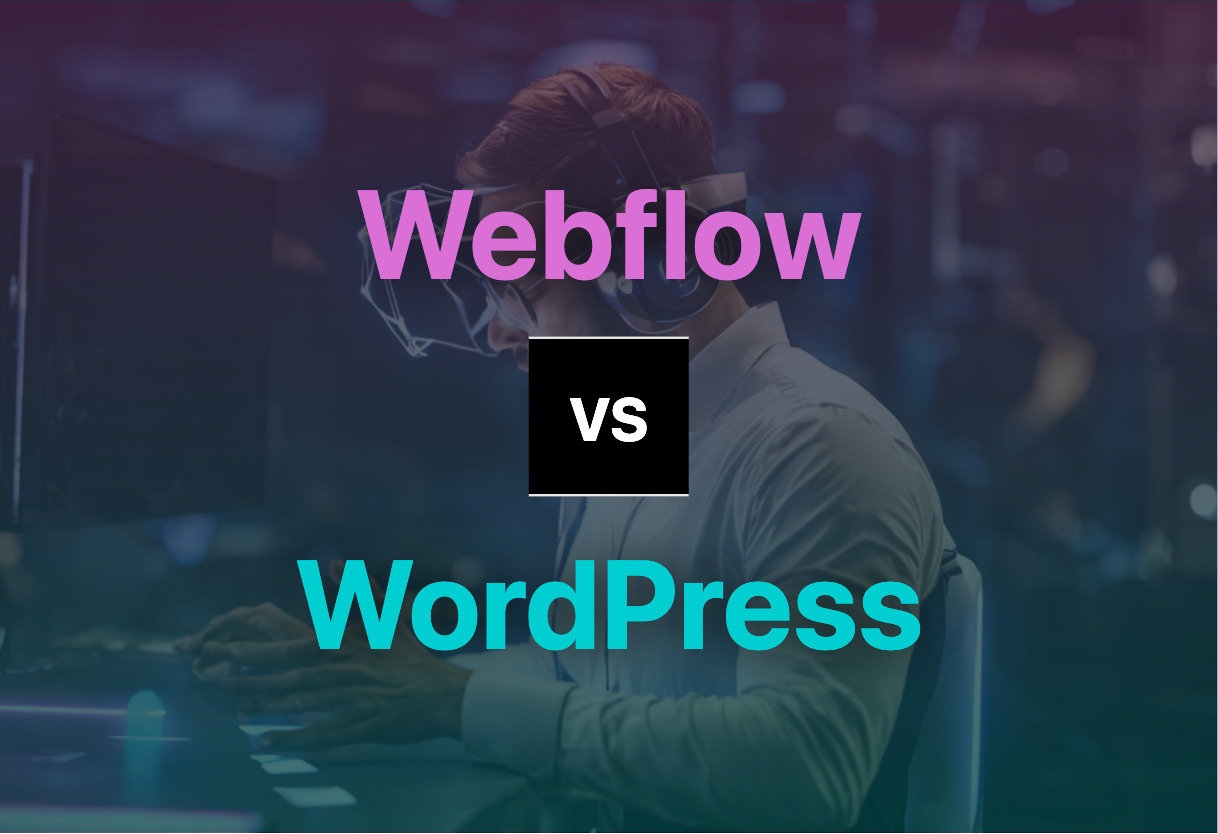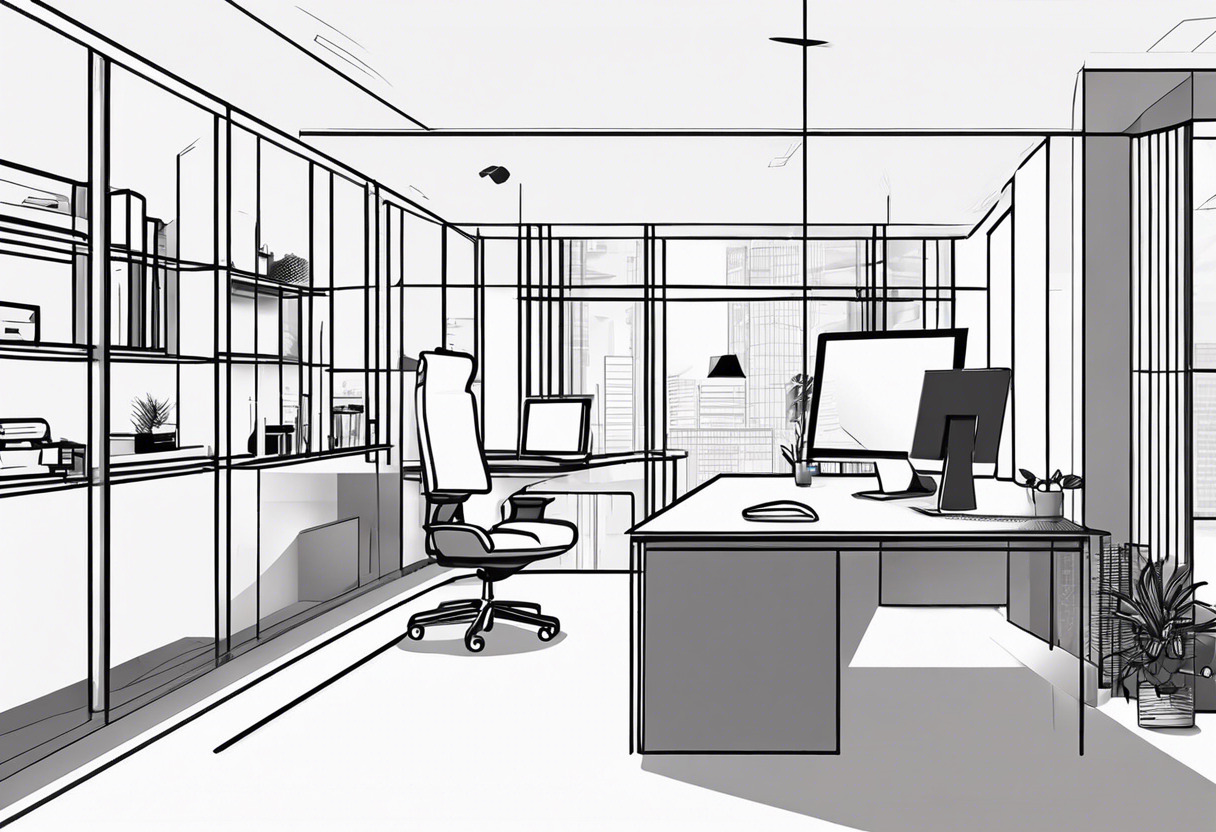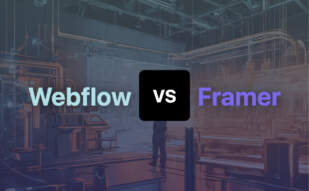When comparing Webflow vs WordPress, our analysis indicates that Webflow is better for designers seeking complete customizability and design control without coding. However, if cost-effectiveness, scalability, and a wider array of plugins are your priorities, WordPress stands out.

Key Differences Between Webflow and WordPress
- Customizability: Webflow offers complete design control and customization without coding, while WordPress requires plugins for complex customization.
- Price: Webflow starts at $29/mo, while WordPress is dependent on add-ons, with costs varying from $15-$50 for essentials and a higher price for custom design and development.
- Ecommerce Capabilities: Webflow integrates with Stripe, PayPal, Apple Pay, and Google Pay; WordPress requires the WooCommerce plugin for ecommerce capabilities.
- Market Share: WordPress powers 40% of websites globally, whereas Webflow is a relatively new player with less market share but is a growing choice among designers.
| Comparison | Webflow | WordPress |
|---|---|---|
| Platform Type | SaaS design tool for website creation | Content Management System, requires WooCommerce for ecommerce |
| Pricing | Starts at $29/mo when billed annually | Various costs from domain ($15-$50/mo), design ($1,000-$10,000), development ($25,000+), plugins, marketing ($250-$5000/mo), hosting ($20/mo avg) |
| Customer Experience | Customizable end-to-end experiences | Dependent on chosen theme and plugins |
| Interface & Design | User-friendly web designing without coding | Over 1,200 eCommerce-focused themes available |
| Payment Gateways | Stripe, PayPal, Apple Pay, Google Pay | WooCommerce Payments, Stripe, PayPal, Afterpay, Authorize.Net, Square, Amazon Pay |
| Analytics Integration | Google Analytics | Depends on plugins, SE0 with Yoast |
| Product Types | Physical, digital goods, and services | Depends on WooCommerce capabilities |
| Security | SSL hosted domain, less hacking risk due to lack of plugins | SSL, auto-restoration, uptime monitoring |
| International Shipping | Available | Depends on WooCommerce capabilities |
| Email Integration | MailChimp | Depends on plugins |
| Total Websites | Over 368,000 | Over 40% of global websites |
| Discounts, Coupons | Available | Depends on WooCommerce capabilities |
| Transaction Fees | Through Stripe | From WooCommerce and Paypal for 2.9% + $0.30 per transaction |
What Is Webflow and Who’s It For?
Webflow is a comprehensive platform for website creation without needing coding skills. It allows customized customer experiences and design control, making it ideal for a user base that varies across physical and digital goods or services businesses. Founder Jameel Mohammed takes pride in design-led brand representation, resonated by designer aficionado Maximilian Müsgens.
This robust eCommerce platform is lauded by designer Charli Marie for simplifying digital product creation. With prices starting at $29/mo when billed yearly, it’s a cost-effective option for web designers, web agencies, and content creators looking to launch or revamp their digital footprint.

Pros of Webflow
- End-to-end design control
- Easy integration with Zapier Apps
- Built-in Google Analytics integration
- Faster checkout with numerous payment options
- SEO support with automatic meta generation
Cons of Webflow
- Transactional fees through Stripe
- Could be costly for smaller businesses
What Is WordPress and Who’s It For?
Commanding a staggering 40% global website and 64% CMS market share, WordPress serves as the digital backbone for millions of sites – personal, business, and everything in between. It’s an all-encompassing CMS, with costs for domain registration, SSL, and other essentials averaging between $15-$50 monthly.
WordPress bolsters eCommerce capabilities via the WooCommerce plugin, leveraged by over 30% of online stores. Though it’s not primarily an eCommerce CMS, it’s still a formidable platform for agencies, freelancers, and businesses looking to project their brand globally without banking-breaking costs.
![]()
Pros of WordPress
- Powers over 40% of global websites
- WooCommerce plugin for eCommerce capabilities
- Vast selection of eCommerce-themed templates
- SEO support through Yoast SEO plugin
Cons of WordPress
- Potential plugin compatibility issues
- Additional costs for design, development, marketing and hosting
- Transaction and service fees
Webflow vs WordPress: The Decisive Final Verdict
In the digital battleground of Webflow vs WordPress, it’s time to judge which victor best serves your unique needs.
DIGITAL PRODUCT CREATORS
For designers aiming for a fine balance of customization without the burden of coding, Webflow emerges as the superior choice. Enjoy full design control and seamless eCommerce compatibility, as endorsed by renowned designer Charli Marie.

DEVS AND AGENCIES
WordPress, an old reliable with a massive 64% CMS market share, is the go-to for developers and web agencies. Offering a vast ecosystem of plugins and themes, coupled with robust SEO capabilities, it holds a solid standing.

eCOMMERCE VENTURES
Webflow, again, steals the show for eCommerce ventures, with its efficient order management dashboard, automated tax calculation, and expansive shipping features. Predominantly, the absence of plugins mitigates the risk of hacking.

CONTENT MARKETERS
Wielding the power of Yoast SEO plugin, customization options, unlimited pages, and automated updates, WordPress takes the trophy for content marketers.

Evaluating Webflow vs WordPress, the verdict sways in the favor of Webflow for design-driven projects, primarily eCommerce ventures. Conversely, WordPress maintains its supremacy for developers, agencies, and content marketing, with its comprehensive plugins and SEO proficiency.
Tiffany Brise
Content writer @ Aircada, patiently awaiting a consumer AR headset that doesn’t suck.





